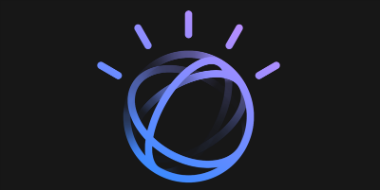Analytics
Making the Internet of Things Ready for Business
September 3, 2015 | Written by: Steve Hamm
Categorized: Analytics | Big Data | Cloud Computing | Internet of Things (IoT) | Smarter Planet
Share this post:
By Pat Toole
In the next few years, hundreds of billions of objects will be connected to the world’s information technology systems via the Internet of Things. That includes everything from the sensors on electricity grids and factory equipment to the fitness monitors we wear on our wrists and food items in the grocery store.
Yet, already, the vast quantities of data flowing from IoT devices are overwhelming the ability of many organizations to capture and make use of it.
That’s why the time has come to make the Internet of Things ready for business. By that I mean building an enterprise-class infrastructure capable of handling all this data and turning it into actionable insights when people need them.
This infrastructure has three essential elements–analytics tools capable of dealing with large quantities of fast-moving data, cloud services capable of handling the immense flow of data and providing anytime access for decision makers, and security systems capable of protecting IoT data as rigorously as organizations do their confidential financial, IP and strategy information.
IBM’s Internet of Things business, which we launched last March 31, is committed to building a business-ready IoT infrastructure on a massive scale. Today, we announced two advances that signal rapid progress in accomplishing our goals.
The first concerns ARM, which is the leading designer of processor technology for IoT devices. We have teamed with ARM to connect sensors based on its processor architecture with our IoT platform, called IBM IoT Foundation. The IoT Foundation is a cloud service that enables organizations to develop their own applications tapping IoT data, to ingest data from multiple sources and integrate it with their enterprise IT systems, and to utilize into our broad portfolio of analytics tools. Because of our tie-up with ARM, organizations will be able to able to analyze their data more quickly and easily and more securely.
The other announcement concerns our strategy of building a series of industry-specific solutions on our cloud platform. We’re introducing the first of them–a solution designed for global electronics, an industry that embeds a wide variety of sensors in everything from kitchen appliances to consumer electronics devices. Three initial clients have committed to the service–Electrolux, the appliance maker; TP Vision, with its Philips smart TVs; and Gibson Innovations, a maker of audio and video equipment.
TP Vision, for instance, is already using IBM IoT technologies to track and analyze the viewing and interaction preferences of millions of customers in 30 countries who subscribe to smart TV features, such as video-on-demand, games, podcasts, and social networking. By adopting the Electronics industry offering in the cloud, TP Vision will be able to easily adjust its costs and usage levels based on shifts in demand, utilize analytics on performance data for proactive service recommendations, and securely and transparently manage the life cycle of the devices.
Additional industry solutions are coming for the automobile and insurance industries, and more.
The fact that we offer a global network of cloud data centers is emerging as a key differentiator for companies tapping IoT data. Many of them are global businesses, and they need seamless global connectivity for the devices they monitor because of latency, privacy and regulatory issues.
We also believe that security will emerge as a top priority for organizations exploiting the Internet of Things. You’re probably seen the TV news reports about connected cars being hijacked remotely by hackers–just for demonstration purposes, thankfully. In one of our first steps to address the vulnerability of IoT devices and networks, we’re working with partners to create a chip-based secure registry service that will establish the identity of devices connected to an IoT network so intrusions into the network can quickly be detected.
But I think analytics is going to be the most important element of creating super-valuable IoT-based applications. Take kitchen appliances. In the future, they will be connected to the Internet and equipped with processor chips like ARM’s–little computers, really. Manufacturers will be able to monitor your refrigerator or dishwasher remotely, detect anomalies and use analytics software to figure out if preventive maintenance is required. Using predictive analytics, you’ll get your appliances taken care of before something more costly happens.
This is how we fulfill the potential of the IoT phenomenon. With intelligence supplied by analytics software, ubiquitous connectivity from the cloud, and enterprise-class security, the Internet of Things can be transformed into the Internet of Insights.
Igniting the Dynamic Workforce in Your Company
In the rapid push to moving to remote work, we’ve seen digital strategies accelerate by years – transforming their workplaces, workstyles, and business processes forever. Overnight, remote workforces put advanced environments of multi-device mobility, dynamic connection points and robust cloud-based apps that ease communication and collaboration. A new normal is emerging, led by the companies aggressively adopting cloud […]
Watson Anywhere: The Future
(Part 3 in a Series) There’s a paradox in the world of AI: While it’s the largest economic opportunity of our lifetime (estimated to contribute $16 trillion to GDP by 2030), enterprise adoption of AI was less than 4% in 2018. A recent Gartner survey said that the 4% in 2018 has now grown to […]
IBM Watson: Reflections and Projections
(Part 1 in a Series) AI has gone through many cycles since we first coined the term “machine learning” in 1959. Our latest resurgence began in 2011 when we put Watson on national television to play Jeopardy! against humans. This became a cornerstone event, demonstrating that we had something unique. And we saw early success, putting […]




